
Under the Paris Agreement on climate change, governments have pledged to keep global temperatures to well below 2 degrees Celsius above pre-industrial levels. And they have drawn up plans to help cities, agriculture and economies cope with worsening floods, droughts, storms and sea level rise based on that.
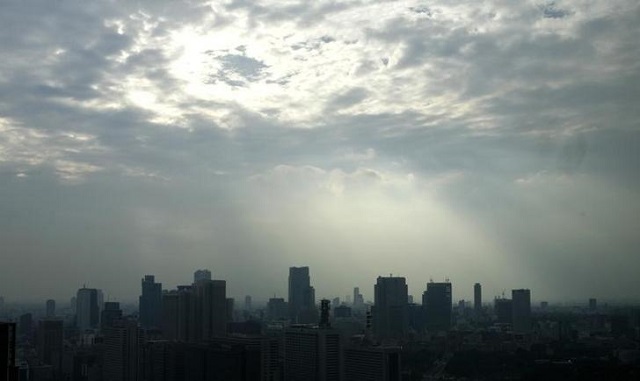 High rise buildings are seen against a smoggy sky in Tokyo November 5, 2007. PHOTO: REUTERS
High rise buildings are seen against a smoggy sky in Tokyo November 5, 2007. PHOTO: REUTERSBut "we are not safe, because we are moving towards a 3 degrees world, and our governments are not ready," said Harjeet Singh, global lead on climate change for ActionAid International, at the UN climate talks in Bonn this week. "We don't even have a process by which to assess whether we're safe or not," he charged. "And we're moving towards a very dangerous world where things are going to get more and more scary and complex."
A temperature rise of 3 degrees Celsius could result in large-scale sea level rise, even more intense and frequent natural disasters, and "dramatic changes" in the availability of water, which would hit food production, predicted Johan Rockstrom, director of the Stockholm Resilience Centre. Scientists believe temperature rises above 2 degrees Celsius could trigger irreversible melting of the world's ice sheets, and drive other changes - such as the release of frozen methane in the soil - that could further hike the planet's temperature, Rockstrom said.
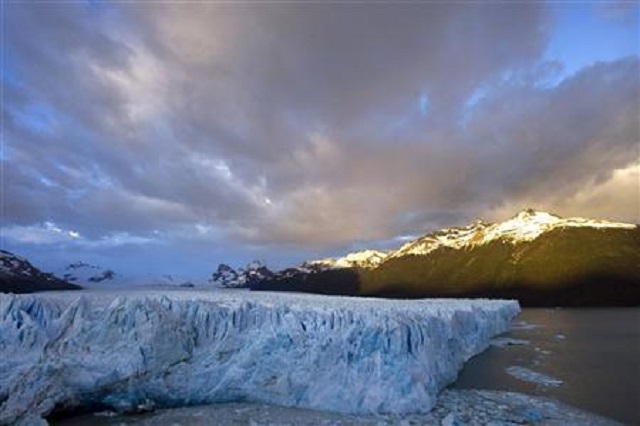 The sun rises over Argentina's Perito Moreno glacier near the city of El Calafate, in the Patagonian province of Santa Cruz, December 16, 2009.PHOTO; REUTERS
The sun rises over Argentina's Perito Moreno glacier near the city of El Calafate, in the Patagonian province of Santa Cruz, December 16, 2009.PHOTO; REUTERSWith uncertainty over how much change is ahead, progress on meeting climate 'adaptation' goals is difficult to assess, particularly no system to judge that progress is yet in place, according to a UN Environment report published on Wednesday. "In Paris, countries agreed to adopt (a) global goal on adaptation. If this goal is to be meaningful we need to know if we are making progress in achieving it," Erik Solheim, the head of UN Environment, told the Thomson Reuters Foundation.
The report aims to help countries try to assess that progress, recognising that the answer "will increase in importance in the coming years", the UN agency noted. The costs of adaptation in developing countries could range from $140 billion to $300 billion per year by 2030, the agency said, depending on how much is achieved in cutting emissions. But such costs, over time, would "pale in comparison to the increasing costs of climate impacts, the brunt of which would be borne by developing countries," the UN agency noted.
John Firth, the CEO of private consultancy firm Acclimatise, said a move by some of the world's leading banks to assess the risks and opportunities they face in the context of a changing climate could help mobilise cash for developing countries. "This is a game changer. Once you get the banks, financial services and corporates starting to understand what their risks are, that's when you mobilise private sector finance," he said.
Countries need better tools to assess how to adapt to a changing climate, said Ingrid-Gabriela Hoven, director-general with responsibility for global issues in Germany's Federal Ministry for Economic Cooperation and Development. "Countries have to make the right decisions on energy, infrastructure and agriculture that are more climate resilient," she said. Some essential ways for developing countries to adapt to climate stresses include introducing early warning systems, building dykes and other barriers to protect farms from heavy rains, retrofitting houses to better withstand winds, and helping communities find more diverse sources of income, Singh said.
Syria to join Paris climate pact, isolating US
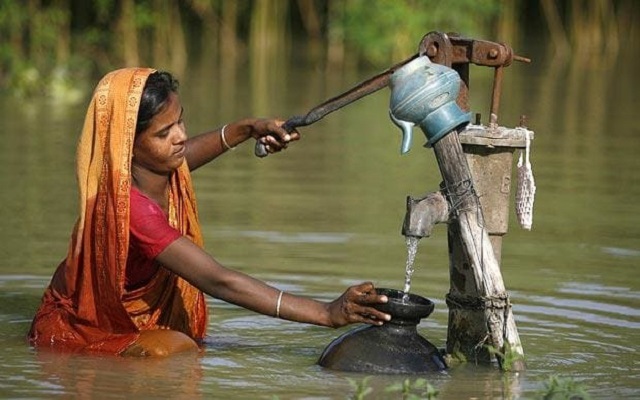 File Photo: A woman collects drinking water in the flooded village of Godadhar, BangladeshPHOTO: REUTERS
File Photo: A woman collects drinking water in the flooded village of Godadhar, BangladeshPHOTO: REUTERSBangladesh adapts
As one of the countries most vulnerable to climate change, Bangladesh began early helping its people adapt to rising seas and increasing floods and storms. About seven years ago the government set up a climate fund, and deposited $100 million a year.
Only two-thirds of this was spent each year, with the remainder put aside for emergencies, according to Saleemul Huq, director of the Dhaka-based International Centre for Climate Change and Development. "Those suffering can't wait for someone else to pay for it. They are going to have to help themselves," Huq said. "Bangladesh has learned a lot on how to adapt."
At least 5 million people living along Bangladesh's coastline are already struggling with rising sea levels, with many seeing plant-killing saltwater enter their fields and water supplies. Many have been forced to drink increasingly saline water.
The government is helping Bangladesh's fishing and farming communities cope with some of the challenges, but in the long term they will no longer be able to live there, Huq predicted. The government also is already planning for that eventuality, by educating children so they have the option of finding work in towns and cities, and by making cities more friendly to migrants.













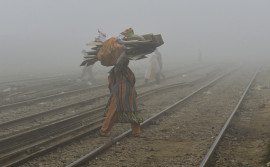





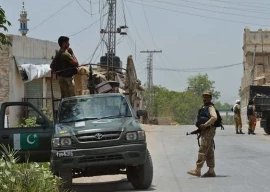






















COMMENTS
Comments are moderated and generally will be posted if they are on-topic and not abusive.
For more information, please see our Comments FAQ